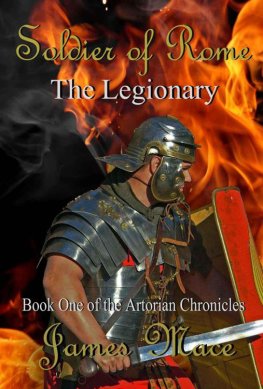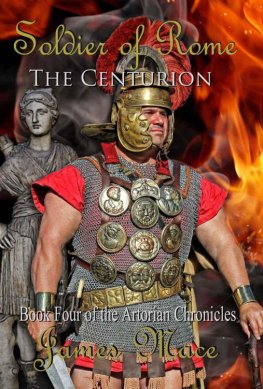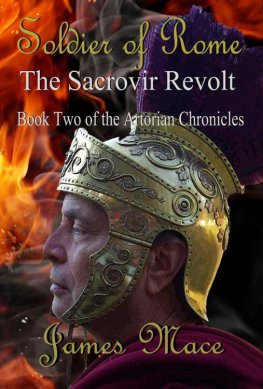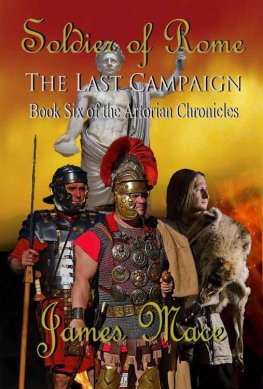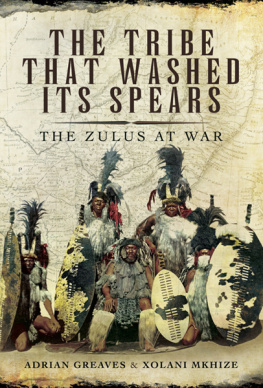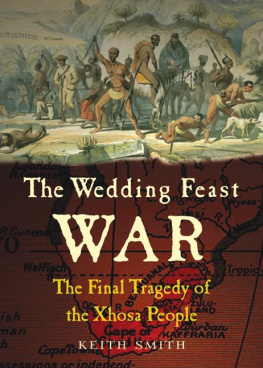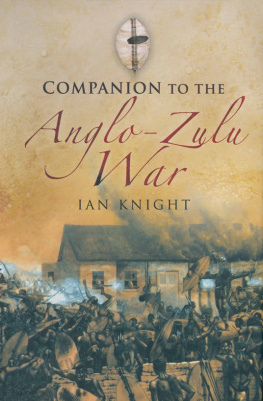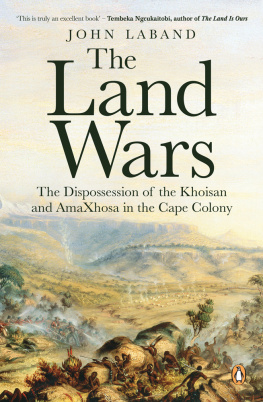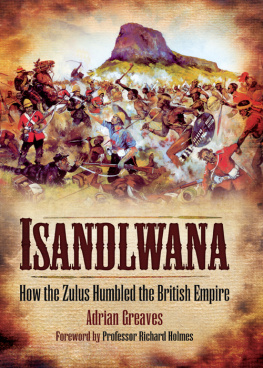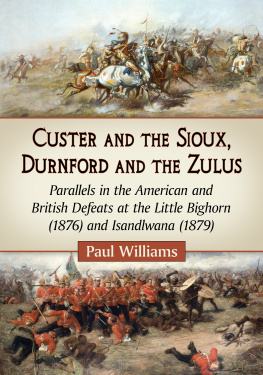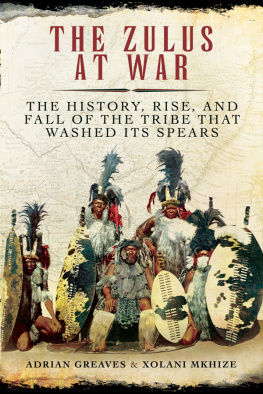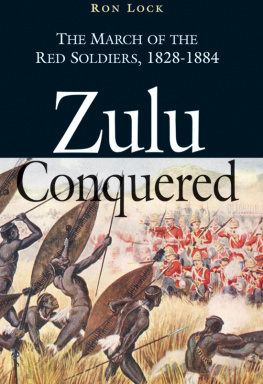Brutal Valour
The Tragedy of Isandlwana
Book One of the Anglo-Zulu War
James Mace
Electronic Edition Copyright 2016 by James Mace
All rights reserved as permitted under the U.S. Copyright Act of 1976, no part of this publication may be reproduced, distributed, or transmitted in any form or by any means, or stored in a database or retrieval system without the prior permission of the publisher.
Characters and events portrayed in this book are based on actual persons and events, but are used fictitiously.
Legionary Books
Meridian, Idaho 83642, USA
http://www.legionarybooks.net
First eBook Edition: 2016
Published in the United States of America
Legionary Books
Cover Images by Radoslav Javor, copyright 2016 by Radoslav Javor and Legionary Books
All photography and maps are used with the generous permission of the Royal Welsh Museum, and from the collection of Ian Knight
The Works of James Mace
Note: In each series or combination of series, all works are listed in chronological sequence
The Artorian Chronicles
Soldier of Rome: The Legionary
Soldier of Rome: The Sacrovir Revolt
Soldier of Rome: Heir to Rebellion
Soldier of Rome: The Centurion
* Empire Betrayed: The Fall of Sejanus
Soldier of Rome: Journey to Judea
Soldier of Rome: The Last Campaign
* Centurion Valens and the Empress of Death
* Slaves of Fear: A Land Unconquered
The Great Jewish Revolt and Year of the Four Emperors
Soldier of Rome: Rebellion in Judea
Soldier of Rome: Vespasians Fury
Soldier of Rome: Reign of the Tyrants
Soldier of Rome: Rise of the Flavians
Napoleonic Era
Forlorn Hope: The Storming of Badajoz
I Stood With Wellington
Courage, Marshal Ney
The Anglo-Zulu War
Brutal Valour: The Tragedy of Isandlwana
* Stand-alone novel or novella
There are not enough tears to mourn the dead.
- King Cetshwayo kaMpande
Forward by Ian Knight
In 1879 Great Britain was the worlds greatest super-power, and its influence was nearing its height. Her possessions stretched across the continents, from the Americas to Asia, Australasia and Africa, and it was said that as the world turned the sun never set on her Empire. Since the young Queen Victoria had come to the throne in 1837 the British Army had faced Canadian rebels, Maori warriors, Afghan hillmen, Russians guns, and many of the impressive military cultures of India and whilst it had lost many a battle, it had lost few enough wars. Yet, in January 1879, beneath a distinctive rocky outcrop in the southern African veldt known as iSandlwana, a part-time militia army of Zulu cattle-farmers inflicted upon it the greatest defeat the British Army would endure in a single action throughout the whole of the Victorian period over 1,300 British soldiers and their African allies were killed, a butchers bill greater than any other in the doleful litany of contemporary British military failures, greater than the Charge of the Light Brigade, greater than Majuba, or Colenso, or Magersfontein, or Spioenkop.
The image of dead redcoats scattered across the green summer grass at iSandlwana deeply shocked the Empire at the time and has become an enduring symbol, since, of the perils of Imperial adventuring. Historians continue to debate the events of 1879, books continue to be written and movies and television documentaries made. Its not hard to see why the story has an almost Shakespearean air of grandeur and tragedy to it, of high strategic folly, of the hubris of generals, of lives needlessly squandered, of the tragic destruction of an ancient way of life - and yet all of this redeemed, if such things can be, by the courage of those who met each other in battle.
In Brutal Valour James Mace has chosen to explore the conflict through the lives of the ordinary men involved, a newly recruited soldier in the ranks of the British 24 th Regiment and a Zulu warrior, both of whom are pushed by forces beyond their understanding into a bloody confrontation at iSandlwana. James tackles the story with the same verve, commitment to historical accuracy, and insight into the universal experience of soldiers across the ages that he brought to his Soldier of Rome and Napoleonic novels.
Brutal Valour offers a vivid insight into the human cost of one of the most dramatic and intriguing incidents in Britains colonial past in Africa.
- Ian Knight (author of Zulu Rising )
Table of Contents
Preface
It is December 1878, and war looms on the horizon in South Africa. British High Commissioner Sir Henry Bartle-Frere seeks to dismantle the powerful neighbouring kingdom of the Zulus and uses an incursion along the disputed border as his justification for war. He issues an impossible ultimatum to the Zulu king, Cetshwayo, demanding he disband his armies and pay massive reparations. With a heavy heart, the king prepares his nation for war against their former allies.
Leading the invasion is Lieutenant General Sir Frederic Thesiger, Baron Chelmsford, a highly experienced officer fresh off a decisive triumph over the neighbouring Xhosa tribes. He and Frere are convinced that a quick victory over the Zulus will negate any repercussions from the home government for launching what is, in essence, an illegal war.
Recently arrived to South Africa are newly-recruited Privates Arthur Wilkinson and Richard Lowe; members of C Company, 1/24 th Regiment of Foot under the venerable Captain Reginald Younghusband. Eager for adventure, they are prepared to do their duty both for the Empire and for their friends. As Freres ultimatum expires, the army of British redcoats and allied African auxiliaries crosses the uMzinyathi River at Rorkes Drift into Zululand. Ten days later, the British and Zulus will meet their destiny at the base of a mountain called Isandlwana.
Cast of Characters
The British:
Private Arthur Wilkinson A new soldier recently assigned to C Company, 1/24 th Regiment of Foot soon after completing recruit training at The Depot in Brecon, Wales
Private Richard Lowe Arthurs childhood friend who enlists with him
Men of C Company, 1 st Battalion, 24 th Regiment of Foot (1/24 th )
Captain Reginald Younghusband Officer Commanding; an experienced and venerable officer who has held his commission for over sixteen years
Lieutenant the Honourable George Hodson Subaltern under Younghusband, very young yet already experienced from the Xhosa War
Colour Sergeant Thomas Browne Companys senior-ranking non-commissioned officer (NCO) and former instructor from The Depot
Sergeant John Edwards Arthur and Richards section leader
Corporal John Bellhouse NCO in charge of the companys sharp-shooters
Lance Corporal William Johnson A sharp-shooter who befriends Arthur
Privates James Trainer, Harry Grant Fellow new recruits, who came with Wilkinson and Lowe from The Depot
Private Jason Bray A much older veteran and mentor to Arthur and Richard
Officers and Other Soldiers of the Regiment
Colonel Richard Glyn Regimental Commander, assigned as commanding officer of the centre No. 3 Column
Brevet Lieutenant Colonel Henry Pulleine Commanding Officer, 1 st Battalion, 24 th Foot (1/24 th )
Lieutenant Colonel Henry James Degacher Commanding Officer, 2 nd Battalion, 24 th Foot (2/24 th )
Captain George Wardell Officer Commanding, H Company, 1/24 th and friend of Captain Younghusband
Lieutenant Teignmouth Melvill Adjutant, 1/24 th
Lieutenant Neville Coghill Aide-de-Camp to Colonel Glyn
Lieutenant Charlie Pope Officer Commanding, G Company, 2/24 th
Lieutenant Gonville Bromhead Officer Commanding, B Company 2/24 th , whos left to guard the depot at Rorkes Drift
Colour Sergeant Frank Bourne Senior NCO of B Company, 2/24 th . At just 24 years of age, he is the youngest colour sergeant in the entire British Army
Next page

